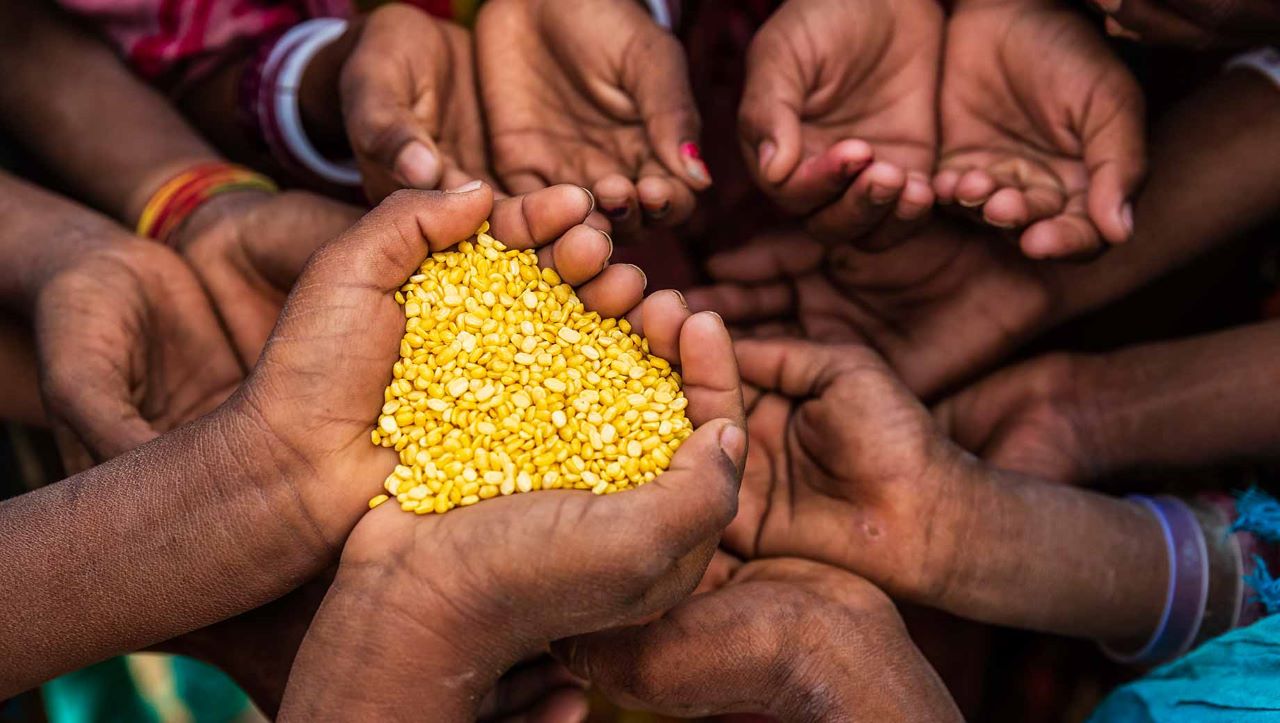The 2024 Global Report on Food Crises (GRFC)
- Global Acute Food Insecurity:
- In 2023, 281.6 million people (or 21.5% of the analyzed population) across 59 food-crisis countries/territories faced high levels of acute food insecurity.
- This marks an increase of nearly 24 million people compared to 2022, mainly due to expanded analysis coverage and worsening conditions in certain countries.
- People Facing Severe Food Crises:
- Over 36 million people in 39 countries/territories were in Emergency (IPC/CH Phase 4), with more than a third in Sudan and Afghanistan.
- Around 165.5 million people in 41 countries/territories faced Crisis (IPC/CH Phase 3).
- 292 million people in 40 countries were in Stressed (IPC/CH Phase 2) conditions.
- Primary Drivers:
- Conflict and insecurity were the main drivers of acute food insecurity in 20 countries, affecting 135 million people.
- Weather extremes were the primary cause in 18 countries, impacting over 72 million people.
- Economic shocks were the main drivers in 21 countries, with more than 75 million people affected.
- Outlook for 2024:
- The situation is expected to remain dire, with conflicts in places like Gaza Strip, Sudan, and Haiti continuing to drive food insecurity.
- The impacts of El Niño, particularly in East and Southern Africa, are likely to worsen the food crises in regions like Malawi, Zambia, and Zimbabwe.
- Catastrophic Food Insecurity (IPC/CH Phase 5):
- 700,000 people were projected to face Catastrophe (IPC/CH Phase 5) in 2023, with 600,000 of them in Gaza Strip.
- By March–July 2024, over half the population of Gaza Strip (1.1 million people) is expected to be in Catastrophe, with the northern governorates facing imminent famine.
The 2024 Global Report on Food Crises with economic factors that significantly impact food security and economic development worldwide
These economic challenges illustrate how intertwined economic development is with food security, as external shocks, such as inflation, currency depreciation, and global economic slowdowns, can severely impact the ability of countries to achieve sustainable development and ensure food security for their populations.
- Economic Shocks as a Primary Driver:
- Economic shocks were the primary driver of acute food insecurity in 21 countries, affecting over 75.2 million people in 2023. This includes 12.1 million people in Emergency (IPC/CH Phase 4) conditions across 15 countries and 43,000 people facing Catastrophe (IPC/CH Phase 5) in South Sudan.
- Global Economic Slowdown:
- The global economic growth rate slowed from 3.5% in 2022 to 3.1% in 2023 due to higher central bank rates intended to curb inflation. Despite tighter monetary policies and lower commodity prices, inflation remained above pre-pandemic levels. This had significant implications for food-crisis countries, particularly those that are net food importers.
- Impact on Food-Crisis Countries:
- Not all food-crisis countries benefited equally from lower international commodity prices. For countries dependent on primary commodity exports, lower export revenues exacerbated economic challenges. For net food-importing countries, the combination of higher borrowing costs and depreciating domestic currencies increased their debt burdens and the domestic cost of imported food and agricultural inputs, keeping inflation high and exacerbating existing macroeconomic vulnerabilities.
- Challenges in Addressing Economic Shocks:
- Governments in these countries face limited budgetary resources to invest in social protection programs or to build resilience among vulnerable households. This is due to elevated levels of public debt, which require increased spending on interest payments. The depletion of foreign exchange reserves also makes it more difficult for these countries to import essential goods, including food.
- Effects of Inflation:
- By February 2024, 58% of low-income countries were experiencing inflation rates higher than 5%, which further strained household purchasing power and economic stability.
